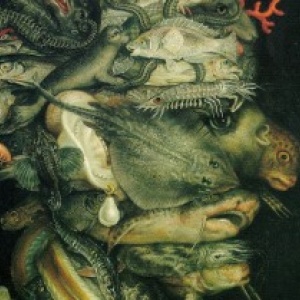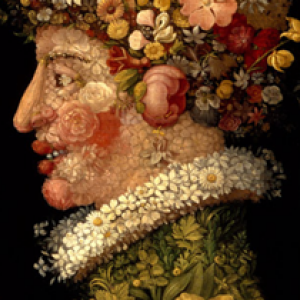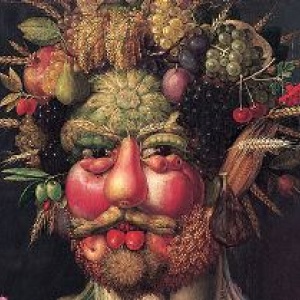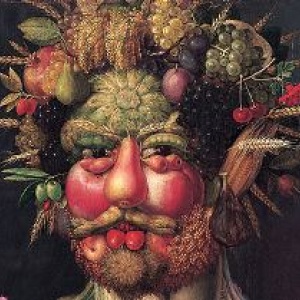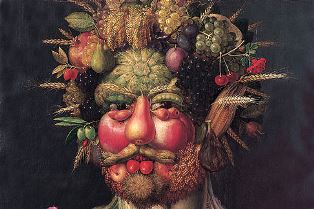
WTI Magazine #16 2014 Feb, 07
Author : Enrico De Iulis Translation by:
Giuseppe Arcimboldo was a unique case in the history of Italian art. Born in 1526, he has been one of the most innovative, original and whimsical painters ever known in world artistic history.
Born in Milan, very attached to his city and to its origins, he came from an artistic family: his father worked at the Duomo factory in Milan as a glazier and decorator. In fact his first works were born in his father's studio with preparations of cartoons for the stained glass windows of the Cathedral. But in Arcimboldo's artworks will never be possible to catch sight of this past as a decorator or of his proximity to the Po valley or to the Milan urban landscape: he was a "portrait painter of allegories".
Once he left headed to the court of Maximilian II of Habsburg in Vienna, he became famous for his composite heads, ie the physiognomic reconstruction of personifications of the seasons or the elements, using - for these compositions - objects related to that concept. You would have a spring profile made by a thousand seasonal flowers and with a softness in the features related to the mild climate; a winter made of roots, bare shrubs, a few leaves and only a lemon to witness the fruits of the season.
For paintings of natural elements, that made him loved so much even by the son of Maximilian II, Rudolf II passionate about alchemical and symbolic things, Arcimboldo chose flames for hair and firearms such as guns and culverins for the shoulders, a candle for the neck and a gold metal necklace to decorate the figure, in the exact position of a necklace worn in a normal portrait. But having been obtained by fusion, the igneous element returns as a common factor of all the objects that make up the portrait of the fire.
There were already many pictures and paintings with the celebration of all the elements of a season or a natural element, but they were traditional ideal panoramas in which fishes, ships, waves and coral beads were placed if the theme of the composition was the water. Arcimboldo does much more, he assembles the elements with ironic and scenic taste, creating a portrait with grotesque features but with an almost enigmatic taste.
Only by the analysis of the figure and by its decomposition in the many parts that comprise it, we can deduce the profession of him who is retracted, or what he impersonates. It is a very modern process, as seen through the eyes of those who live in the twenty-first century: a fabulous and intelligent taste, polyvalent composition of still life, description, hidden message, a collection of puzzles with a common denominator, which glorifies itself especially in the reversible paintings where you can have two ways of viewing the work with two different meanings.
It is an innovative invention also because it is a special effect, a parameter from which all the contemporary designers have drawn to create fantastic figures for cinema and theater, hitting with a single shot the connotation, the feature and the nature of a character. We approach with wonder at these paintings even today, playing in recognizing the dozens of elements that make up a portrait of Arcimboldo and being amazed of the artifice of this ingenious inventor of painting.



